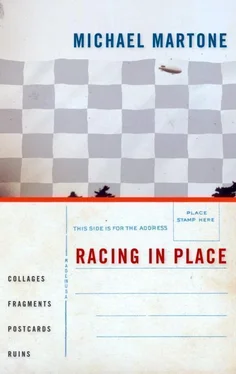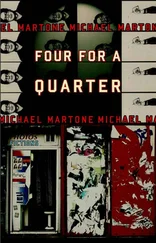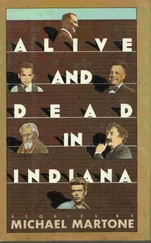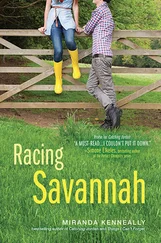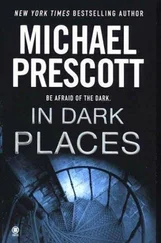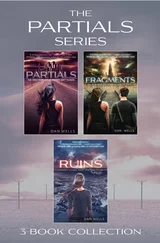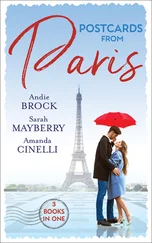Bypass
My father hadn't listened when his doctor explained what they were going to do to him. I told him as he recovered that it had been a good sign when the surgeon switched his heart back on, that it started up again without a stutter. "Boom," I think I said, "it kicked right on." I had mentioned this as a good thing, as an indication of how strong he was, his heart was, how successful the operation had been.
"They stopped my heart?" my father asked. He couldn't, didn't believe it.
"They can't quilt on the organ with it flopping in your chest."
"How long?" he asked.
"Hours," I told him.
On the other side of the curtain, my father's roommate, who also had had a bypass, was teasing his young doctor. He asked how long before he could have sex again with his wife. The doctor had been sketching out the regimen of recovery, exercises, dosages of pills. He seemed unprepared for the question. The patient's wife giggled. The patient said he couldn't wait to start up again. His wife continued to laugh and snort. My father ignored them. He was concentrating on his own heart, its simple mechanics and none of its poetry.
B-Side
This essay is an accumulation of fragments. It is on the flip side of the hit story "In the Heart of the Heart of the Country," which is itself, by design, a fragmentary accumulation of data. What was left out when Gass selected and amplified his observations? I would love to discover the left-out outtakes, the takes not taken, the rejected jam sessions, the negligible leavings from the other side of the track. In the story, a railroad track guts the town of B., the track that sings. In Brookston, at the time Gass wrote the story, the tracks were owned by The Monon, the Hoosier Line. No map can ever map a place exactly. All maps are distortions. The Monon. I am more interested in the trash left over, the stuff that doesn't fit, like all the junk genetic sequencing discovered in the genome. The thrown away. The empty place that must be filled. The space that holds open a place. The nothing that does not fit. Monon. Monon. Monon.
Battlefields
In elementary school, when I first had to memorize Abraham Lincoln's Gettysburg Address, I confused "hallowed ground" with "hollowed ground." The graves were a kind of hollow, I figured. The ground did appear to be hollowed out of the rest of the world. These precincts are set aside, allowed to lay fallow as a result of armies, often accidentally, fighting each other at these coordinates, crossroads, campsites. If a hidden component of place is always time, preserved battlefields are ways to stop time. But in doing that, they do more. Places that were, for a moment, so briefly populated, so violently inhabited, are now so often empty of people. Especially the battlefields with more obscure histories like Tippecanoe. They seem like the dead zones of seas at the mouths of rivers, where sustaining oxygen has been sucked out of the water. Who remembers? In busy Europe, wars plowed the same fields over and over. The few battlefields that exist in North America suffer under the pressure of the present catching up. The survival of these dead regions seems more likely in the parts of the world that were remote on the occasion of their violent and definitive occupation.
After the battles, the history, the facts of the matter, are done, gone, over. We are left with the residue-the roadside marker, reduced to the inscribed steel plate bolted to a boulder. And this absence of anything. Something happened here, and because it did, nothing can ever happen here again. A sign marks Prophetstown with a paragraph, no longer than this one, of history. A mile down the road, Tippecanoe's obelisk is in a fenced grove of trees, a monument to its own insignificance. The fence allows for a notice that reads Entry Is Prohibited each night forever more after sunset.
Bonneville
I first went looking for B. in my parent's big green Bonneville. I left from Butler soon after reading "In the Heart of the Heart of the Country" in my literature class. The car handled like a boat, wallowed along the secondary roads I followed toward West Lafayette and the archipelago of B-beginning towns within commuting distance of Purdue, where Gass had taught. Battle Ground, Burrows, Buck Creek, Brookston, Bringhurst, Boylestown. After thinking B. was Battle Ground, I settled on Brookston and searched its back streets, navigating by means of prose, on the lookout for landmarks. I never found the row of headless trees, the sidewalk that crumbles into dust. Consulting a ragged phonebook in a phone booth outside the phone company, I found a few names of characters, and, for a second, considered calling the Motts, but stopped myself. The author, I assumed, had consulted the same or similar phonebook during composition, borrowing a real name for the story's reality. Mott, who could top that?
The lights were coming on in the houses as I cruised the streets. It was a pale Indiana winter, with the diminished sun a long way off to the west. In the gloaming, I continued to look for that stand of headless trees until I picked up a tail-a local police car-who trailed me, as curious of me as I was of his town, at a respectful distance until I crossed the city limits on Indiana 43 heading south toward Indianapolis.
Bypass
Jigsaw puzzle pieces look like pieces of a jigsaw puzzle. Each have the telling knobs and corresponding scoops, the bulges and depressions save for the welcome exceptions of the edge and corners. Apart they look almost alike. I like the particular jig that cuts that notch, heart-shaped, a wedge more defined than the simple swelling fingers and peninsulas of other, less radical cuts and curves. My father began to piece together puzzles to pass the time while he recovered from his surgery. His heart had been puzzled back together, and he, of course, in his convalescence pondered the puzzle of the heart.
"You will be sad," his doctor had told him, including among the prescriptions antidepressants, mood enhancers.
The puzzle picture of a bucolic landscape or a placid river that he pieced together made him weep. Exhausted by the effort of manipulating the cardboard chips and processing the sentimental narrative coming together on the table before him, my father had me walk him down the driveway, a journey of a thousand miles, where he fixated on the crackled crazing of cement in a square of sidewalk. It brought tears to his eyes. I gave him a puzzle I ordered from the catalog of the Museum of Modern Art. No picture, just each piece a different primary color and each piece brightly colored on both sides, the heads and tails. It looked easy, but it was harder than it looked.
Butterflies
Indiana rests in the lee of Lake Michigan. As far south as Indianapolis, the clouds produced by this coincidence cast the state in shadow. Gass acknowledges the phenomenon in a section called "Weather":
In the Midwest, around the lower Lakes, the sky in the winter is heavy and close, and it is a rare day, a day to remark on, when the sky lifts and allows the heart up. I am keeping count, and as I write this page, it is eleven days since I have seen the sun.
In the Gothic gloom of Jordan Hall, whose limestone facade mirrored the veneer of limestone clouds, I read those words and was comforted to imagine that weather mine, particular to me, a map of my own interior state. I stood at a specific intersection of climate and topography. Chemistry too.
Indianapolis had been a sad town then, but years later, when I stopped en route, on my way again to B., the old ramparts, stockyards, and warehouses seemed transformed. Even veiled in its usual shroud of haze, it felt different to be here. I remarked to my host, Susan Neville, "What gives?" Without missing a beat she responded, "Prozac money," referring to the pill, locally formulated, that seeded the weather of the heart while, at the same time, made glad the pocketbooks of the heartland. Naptown awoke in spite of the weather.
Читать дальше
